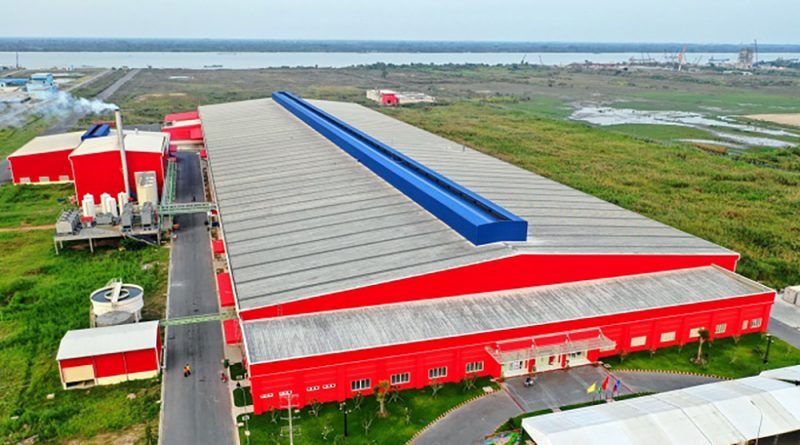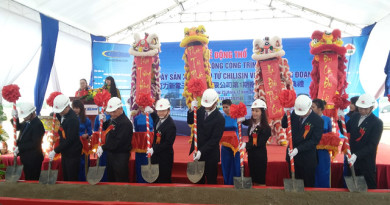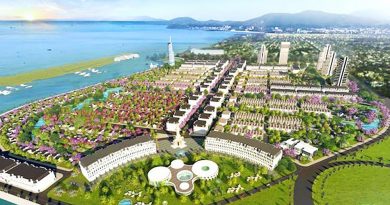Local giant beverage maker injects $173 million into a new plant
Tan Hiep Phat is expanding with a new big plant in the Mekong Delta, a move toward realizing its ambition in the global arena.
The leader of Vietnam’s ready-to-drink tea market (THP) on March 14 inaugurated its plant in Hau Giang Province, the biggest beverage manufacturing plant in the country’s southwestern region.
This is one of Vietnam’s most modern plants, using Aseptic filling lines from GEA Procomac, an Italian technological leader in beverage filling.
The new investment took the number of THP’s manufacturing plants to four with total capacity at more than a billion of liters a year, a step closer to fulfilling its target of becoming a leading beverage maker in Asia.
For healthier drinks
Vietnam is a very potential food and beverage (F&B) market, according to the Business Monitor International(BMI). F&B categories currently account for the highest proportion of consumers’ monthly spending, about 35 percent. F&B spending is equivalent to about 15 percent of the country’s GDP and the figure is on the rise.
Like many other countries, Vietnam is seeing an upward trend in consumption of soft drinks. In 2000, its consumption of soft drinks per capita stood at six liters, but climbed to 44 liters in 2016.
According to Statista, one of the world’s largest statistics portals, Vietnam’s beverage market was estimated at nearly $3 billion in 2018, with an average growth forecast of 15 percent in the period of 2018-2021.
It forecasts that the local beverage industry could make revenues of $3.37 billion by 2020, nearly doubling that of 2015.
In terms of ready-to-drink tea products, the market research company Euromonitor reported that Vietnamese people annually consume more than two billion liters.
Most market research has a joint stance that Vietnamese consumers are willing to pay more for higher-end drinks, increasingly prefer trusted brands and healthy products, and value convenience factor.
A BMI research indicates three key trends in the local F&B consumption.
First and foremost is the need to use natural and organic foods. Consumers, with rising income, tend to opt for clean, organic and environmentally-conscious food, and they are willing to pay more for daily meals. More than 86 per cent of the surveyed consumers in Hanoi and Ho Chi Minh City said that they prefer to choose natural and organic products or in-season produce for health reasons.
Convenience emerges as a factor which consumers increasingly pay much more attention to when selecting products. They tend to prefer smaller products, servings for one person which are handy on the go. Technology is another factor that makes changes in the local beverage market. Local youths are dynamic, eager to taste and readily pay for tasty and trend-setting drinks.
Experts said that the abundant supply of farm produce, a young population, and increasing demand could help Vietnam grow into one of the largest fast moving consumergoods (FMCG) markets in the region. This also poses a good opportunity for producers to develop brands for their products and increase the application of technological advances into producing and diversifying products, thus helping to win both domestic and foreign users.

This is one of Vietnam’s most modern plants, using Aseptic filling lines from GEA Procomac, an Italian technological leader in beverage filling.
THP’s production capacity
Tan Hiep Phat’s VND4 trillion ($173 million) new plant is situated on an area of 40 hectares (99 acres) in the Mekong Delta province of Hau Giang. Its construction is being done in three phases. The first phase, with an Aseptic filling line, has begun operation with a capacity of 48,000 bottles per hour or 130 million liters a year.
Two more lines will be installed in the first phase to increase the total capacity to 300 million liters a year. The total investment of the first phase is estimated at VND1.8 trillion ($78 million).
With the Aseptic, closed-loop production system, THP produces nature-based beverages including Dr.Thanh Herbal Tea, Zero Degree Green Tea with Lemon, Number 1 Energy Drink and Zero Degree Macchiato MilkTea. They are produced in completely sterile conditions and with no preservatives or artificial coloring.
The quality of raw materials is strictly controlled before they go through nutrient extraction. The water used for the production meets the standards set by Vietnam’s Ministry of Health. The temperature and the duration of the extraction process are carefully supervised to preserve all the nutrients beneficial to health.
The extracted solution then goes into a 10-micrometer filtration system and an 11,000-speed super-centrifugal filter system to ensure the complete removal of ultra-small impurities and physical hazards that are invisible to the naked eye.
After that, the products are sterilized for 30 seconds through a UHT system at a temperature of 140 degrees Celsius and then cooled at 25 degrees Celsius. These steps help retain the nutrients in THP’s products.
Preforms and bottle caps are made in a closed-loop manufacturing process. Imported virgin plastic resins are heated at 280 degrees Celsius to completely eliminate the risk of microorganisms and then blown into shape with moulds. The Aseptic technology has superiority in not only the UHT super-sterilization process but also in filling and capping processes, thus helps to create absolutely sterile and pure products without preservatives. THP’s products are certified by the US Food and Drug Administration.
The Hau Giang plant is the first in Vietnam to use the Aseptic production technology for cup filling and sealing lines. Instead of filling and capping only PET bottles, THP’s investment in Aseptic technology for cup filling and sealing lines aims to increase convenience factor of their products. This technology can be used for various drinks including Zero Degree Macchiato Milk Tea, milk coffee and corn milk.
“The THP factory was designed and built in compliance with strict international standards and rules, meeting extremely stringent requirements for Aseptic production,” says Kim Henriksen, APAC regional head of the R&D beverage production technology at GEA Group.

THP plans to increase exports to 10 percent of its total output by 2023.
Dr Thanh’s strategy
Tran Qui Thanh, THP’s CEO and founder, said his company chose Hau Giang as the location for the new plant since the province is along the Hau River, which would enable THP to distribute its products throughout the Mekong Delta with more ease and at lower costs. In addition, it will also better serve exports to Cambodia, Thailand and other neighboring countries by ocean freights.
“The Hau River region has played a strategically important role in the firm’s revenues and double-digit growth in recent years.”
The company will make the most of the delta’s abundant natural resources such as fruits to create new drinks, serving domestic and overseas markets. The vast numbers of coconut grown in Ben Tre Province will, for example, be used to develop products like coconut milk and fresh coconut juice.
In the first phase alone, the Hau Giang plant will create jobs for some 300 local people. Once all three phases of construction are completed by 2025, it is expected to provide more than 1,000 jobs.
“Our target goes beyond the construction of the Hau Giang plant. We plan to increase exports to 10 percent of our total output by 2023,” said Tran Qui Thanh, THP’s CEO and founder.
The plant is part of THP’s strategy aimed at tripling output in the medium term. Its plan envisages the firm producing more than three billion liters of beverages a year by 2023, three times the current volume. By 2027 THP aims to earn revenues of $3 billion.
Currently the domestic market of 95 million people remains a key facilitator of THP’s future growth. Besides, it plans to export its products to 20 countries and territories, including some demanding ones such as the U.S., Canada, France, the Netherlands, Australia, South Korea, and Singapore.
To achieve these goals, the firm plans to build plants in other countries to take advantage of local raw materials, expand its product portfolio and improve its position overseas.
Source: e.vnexpress.net







